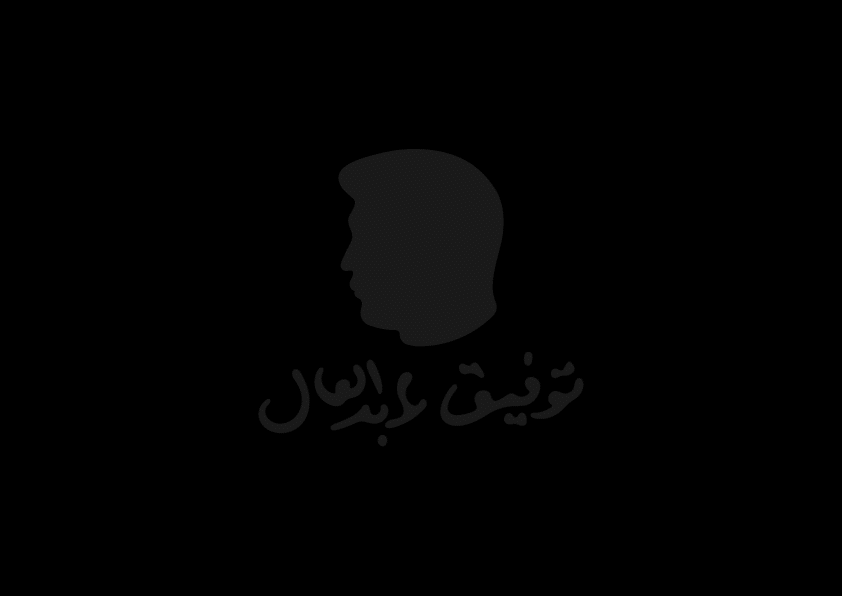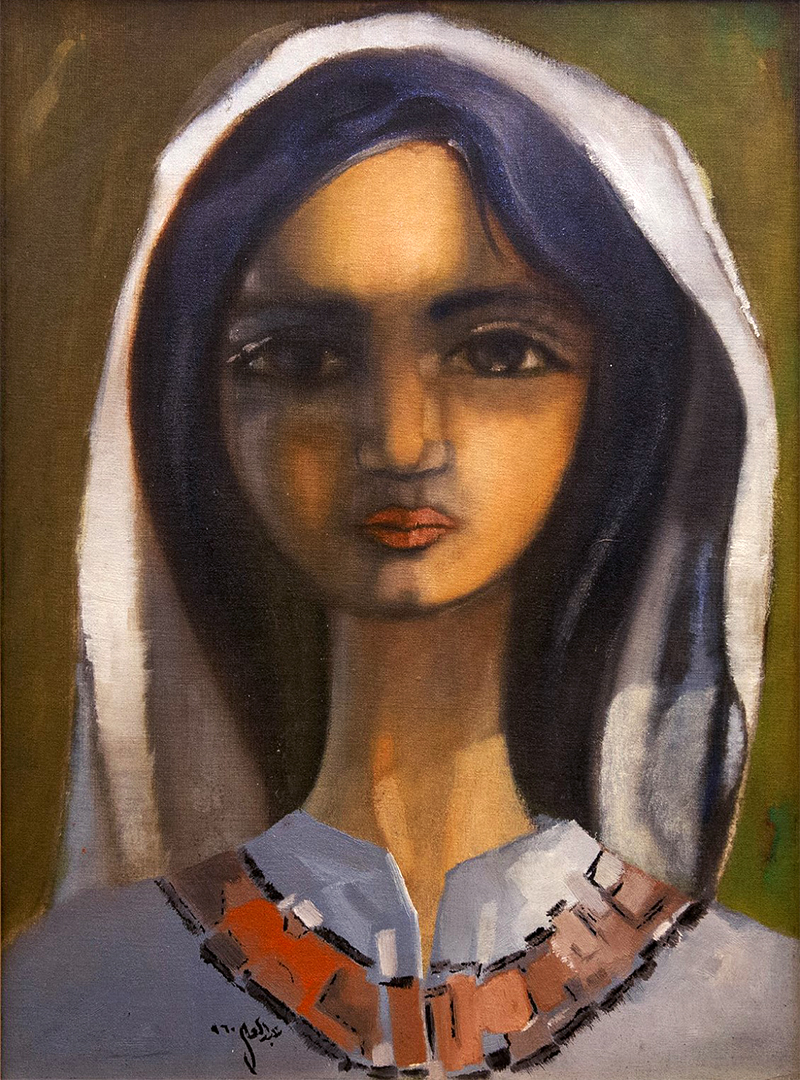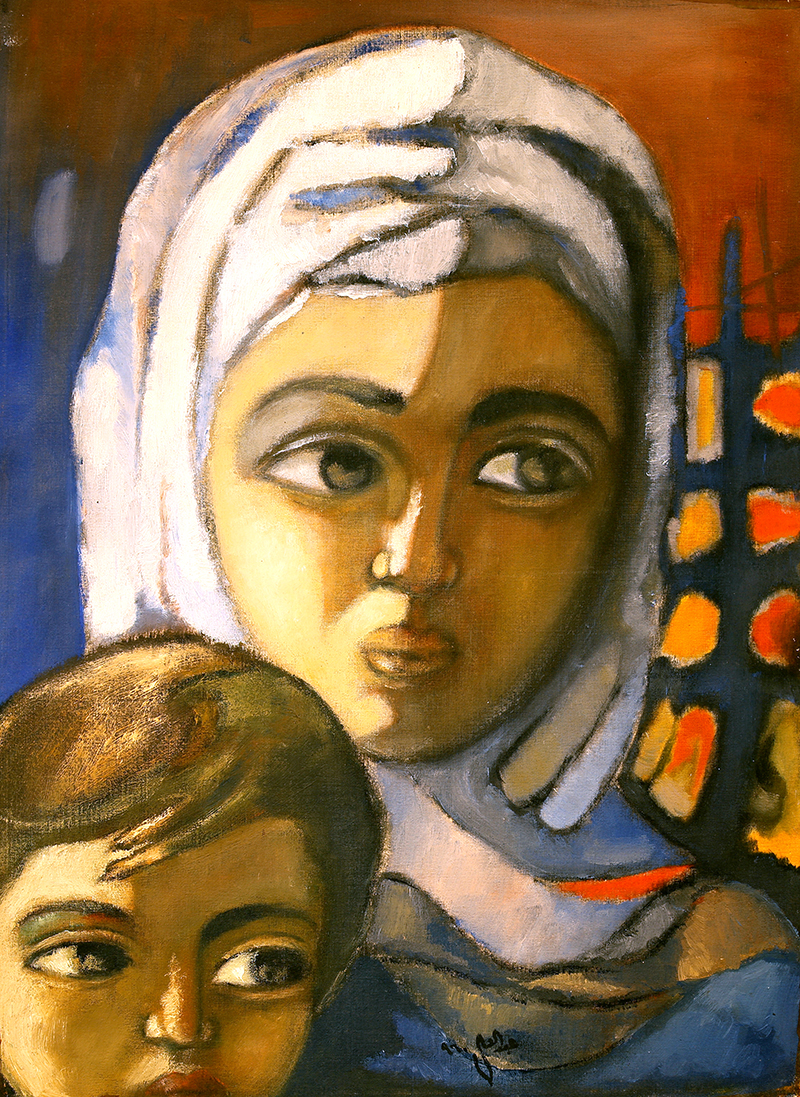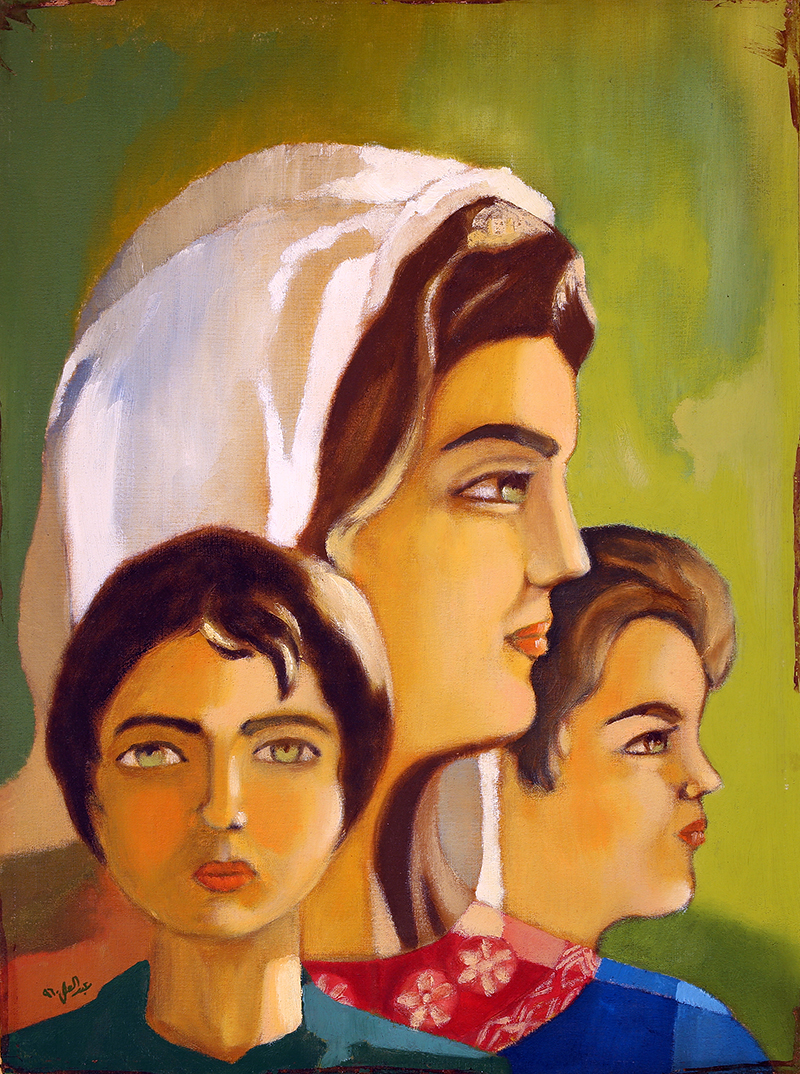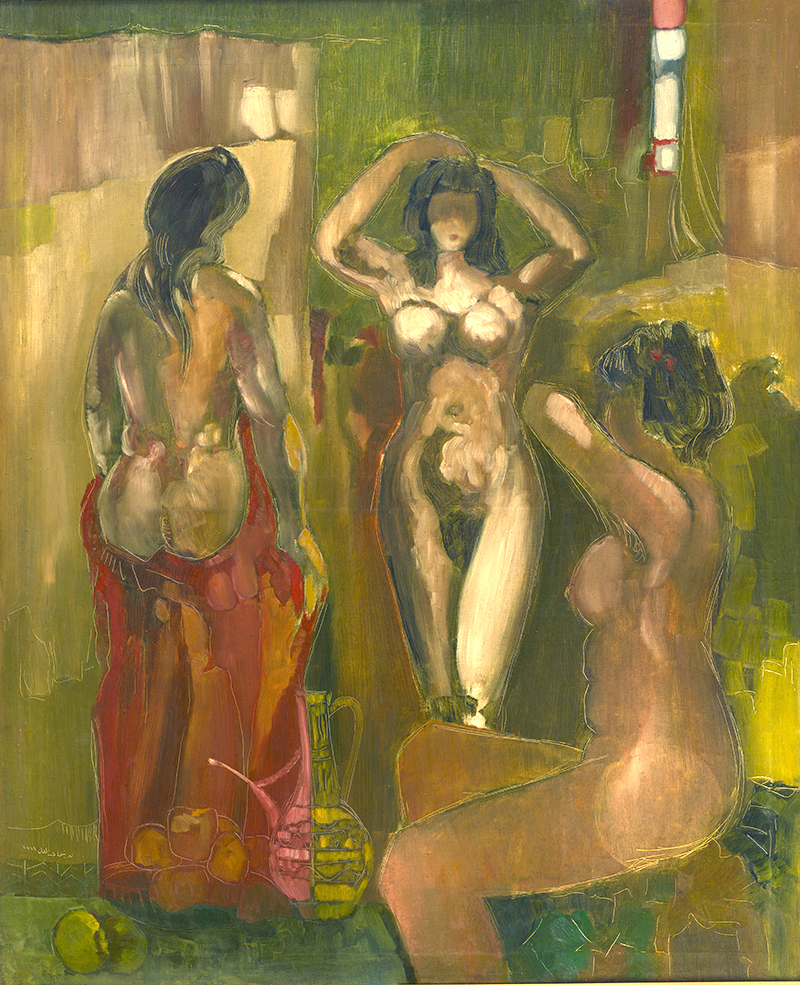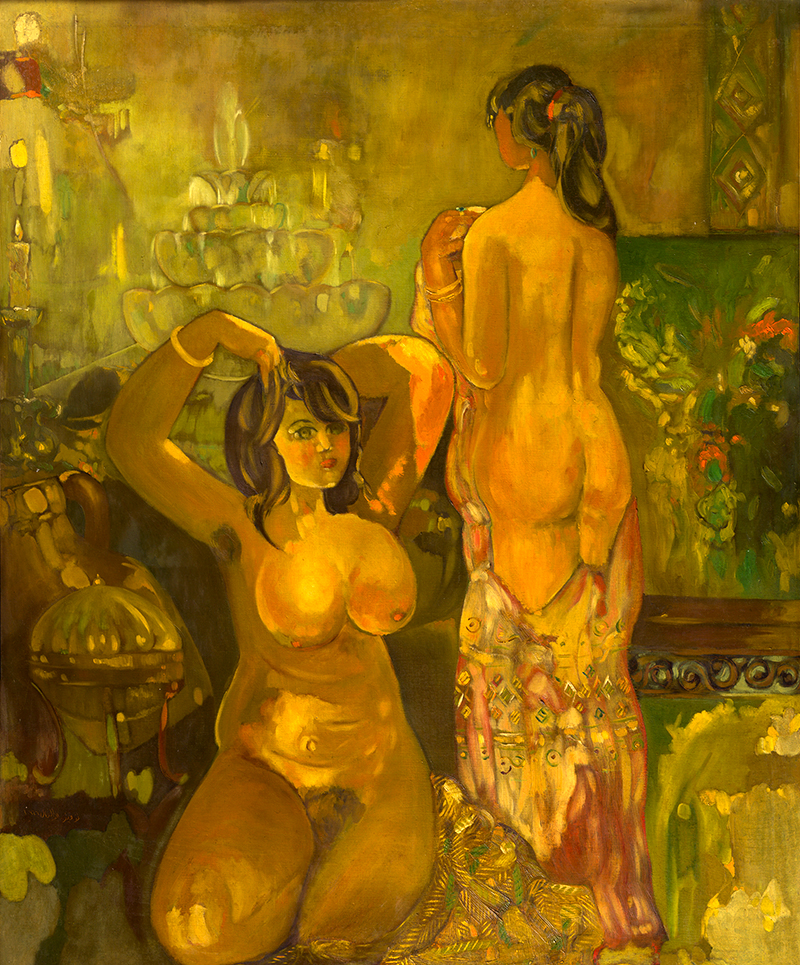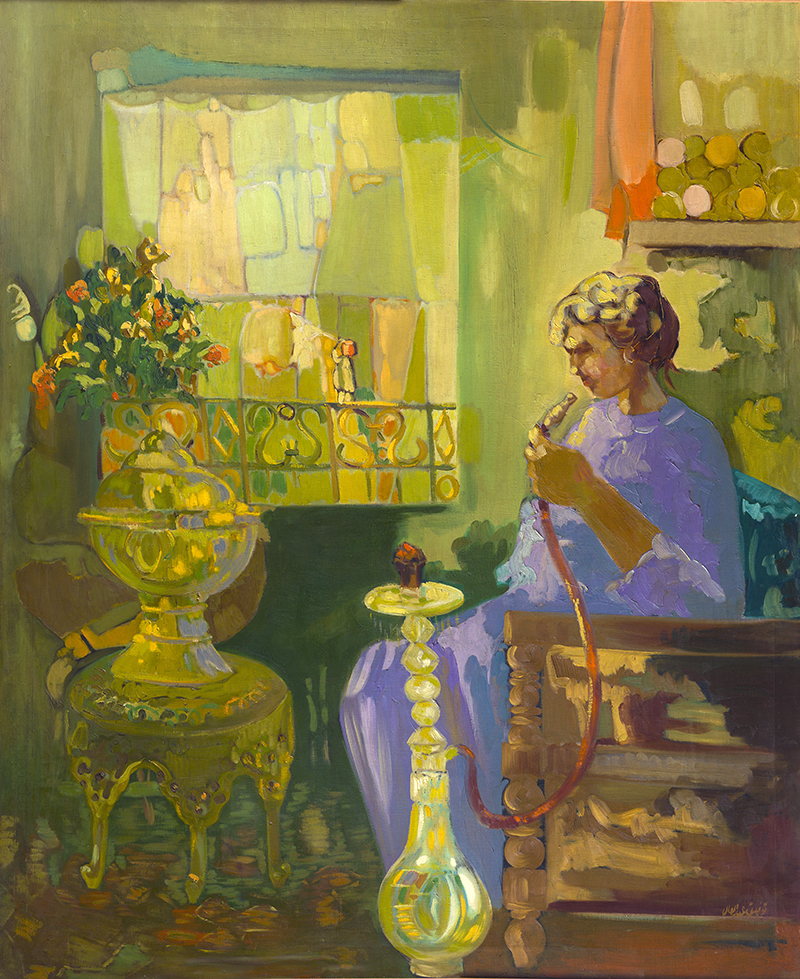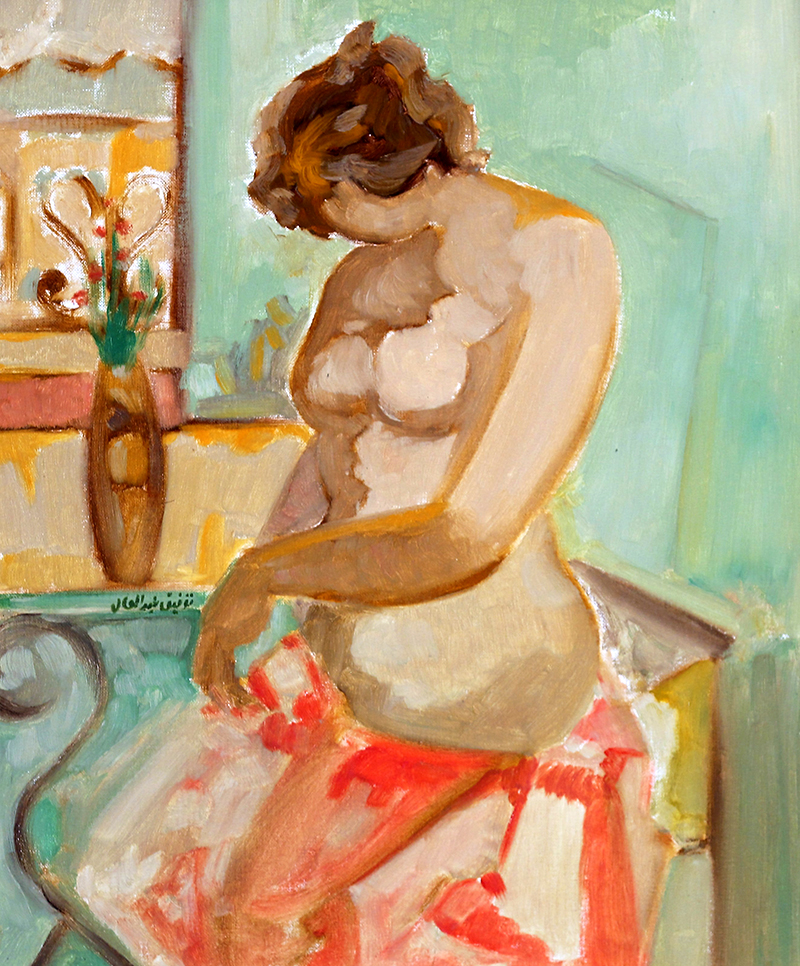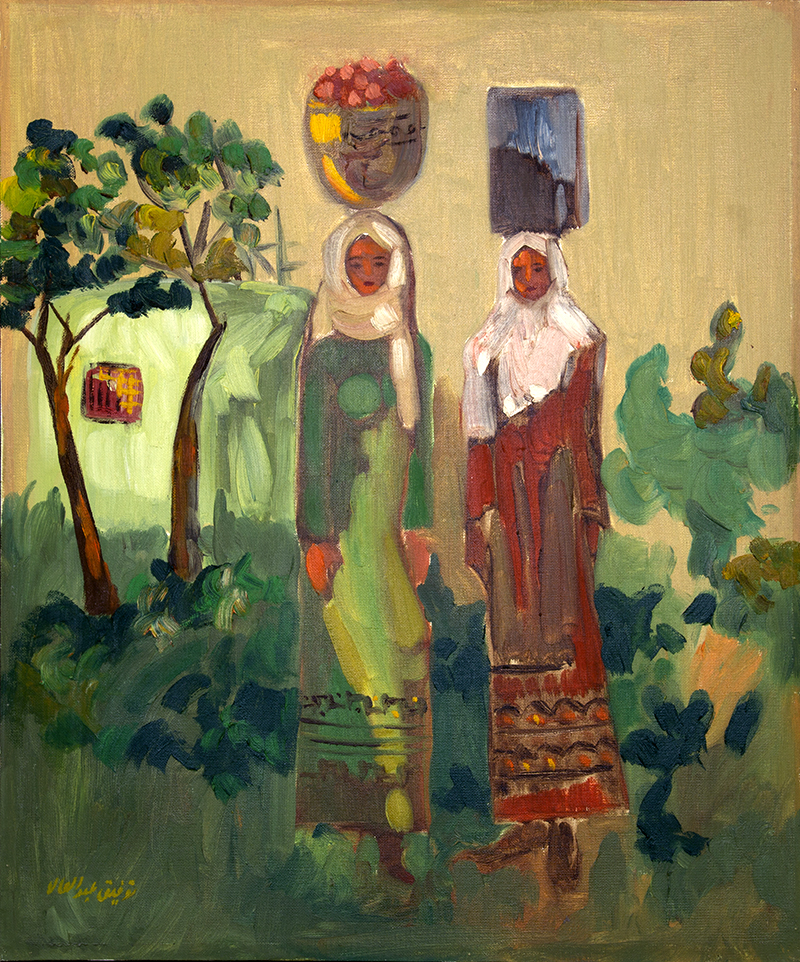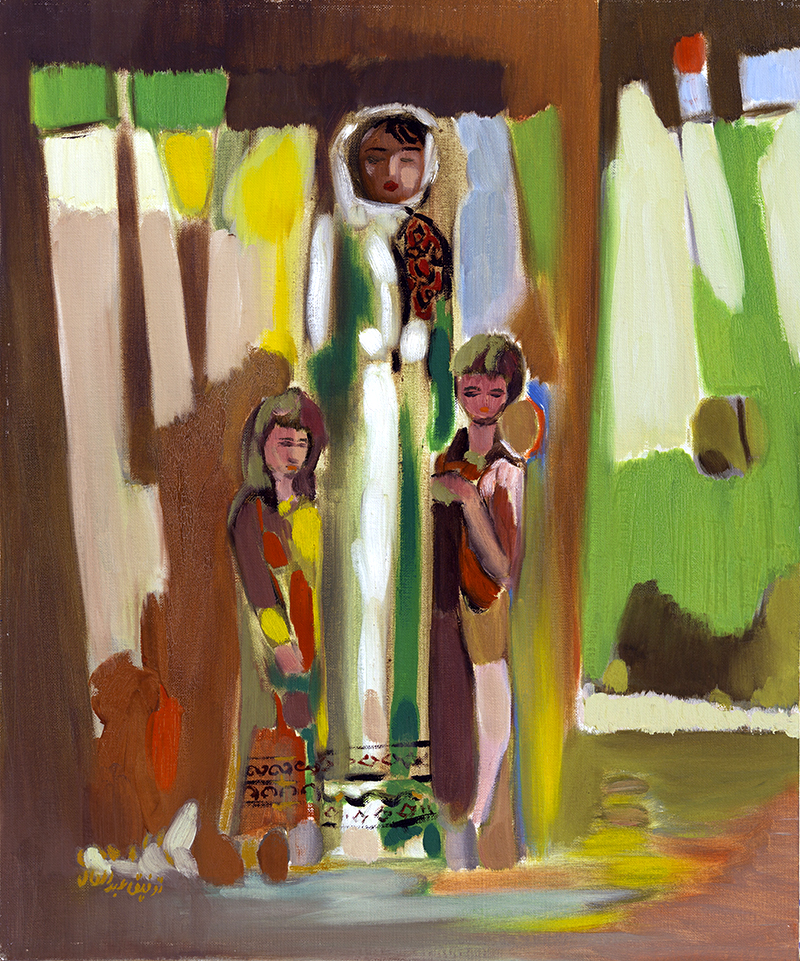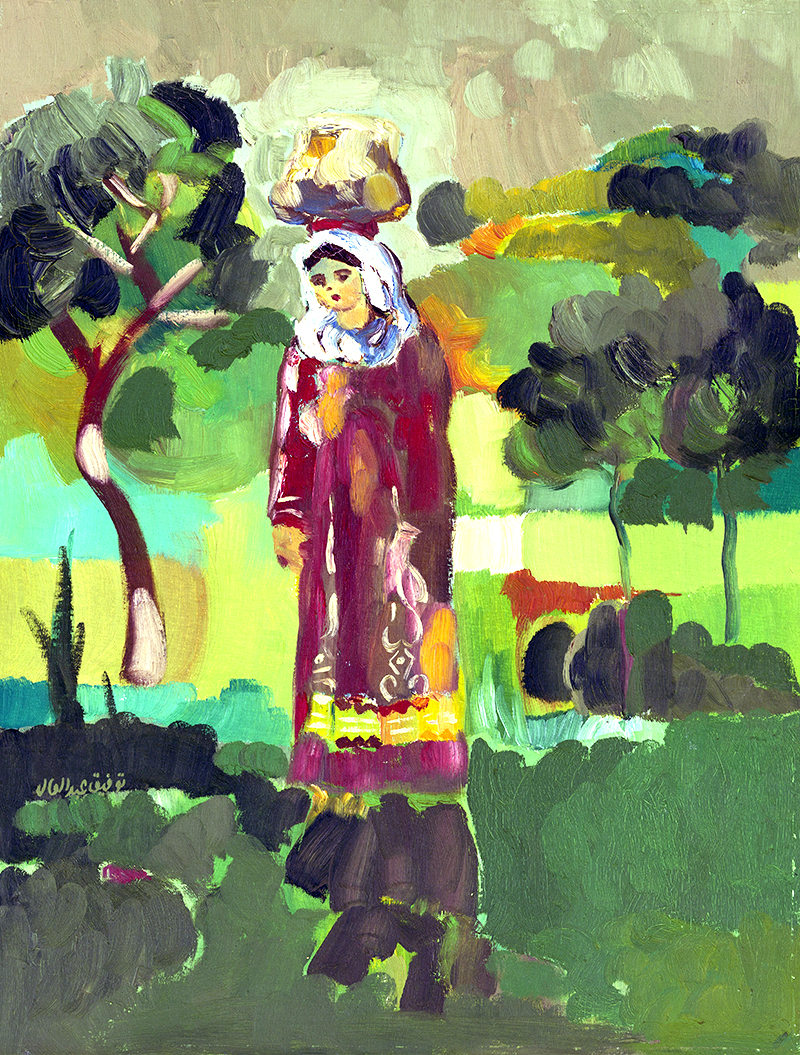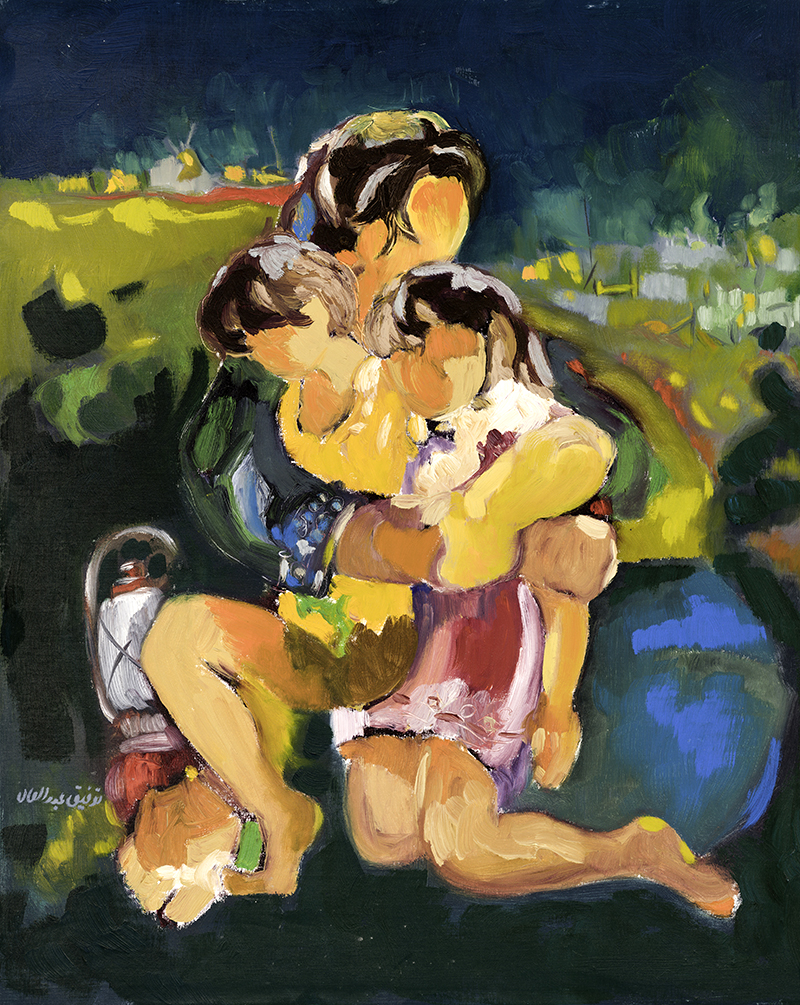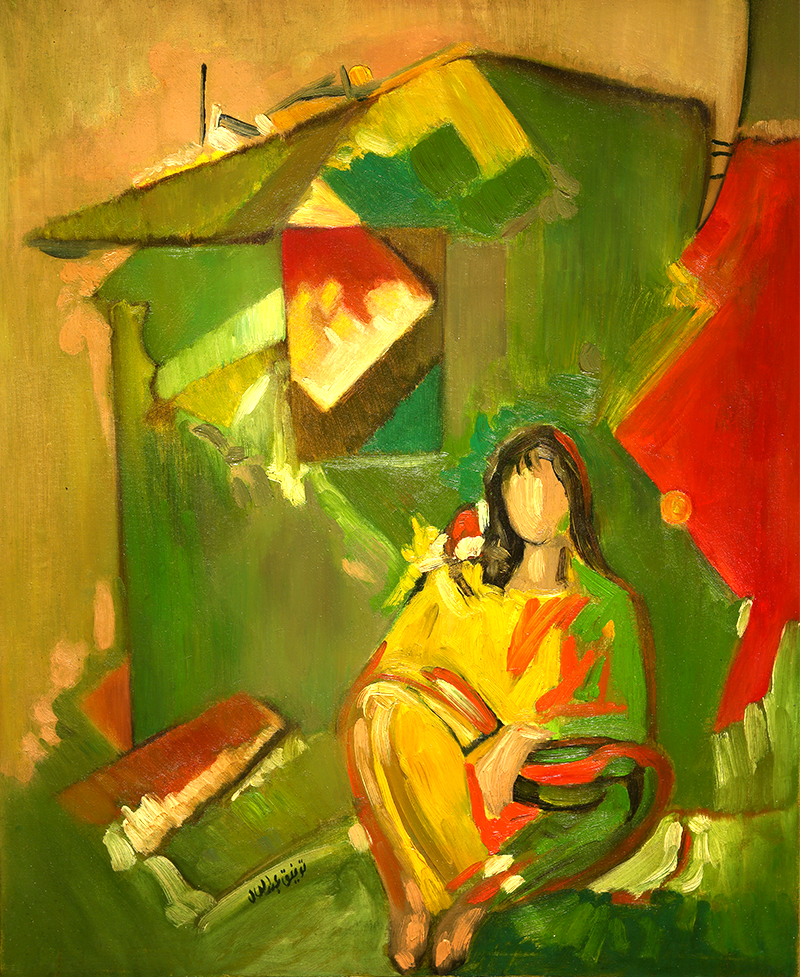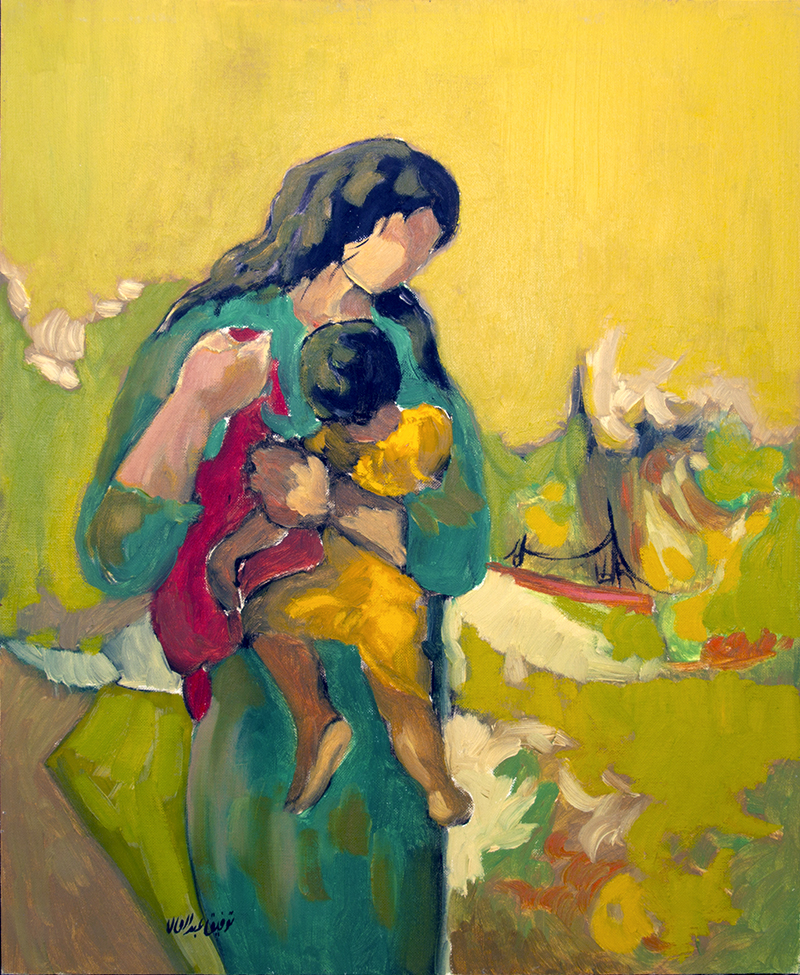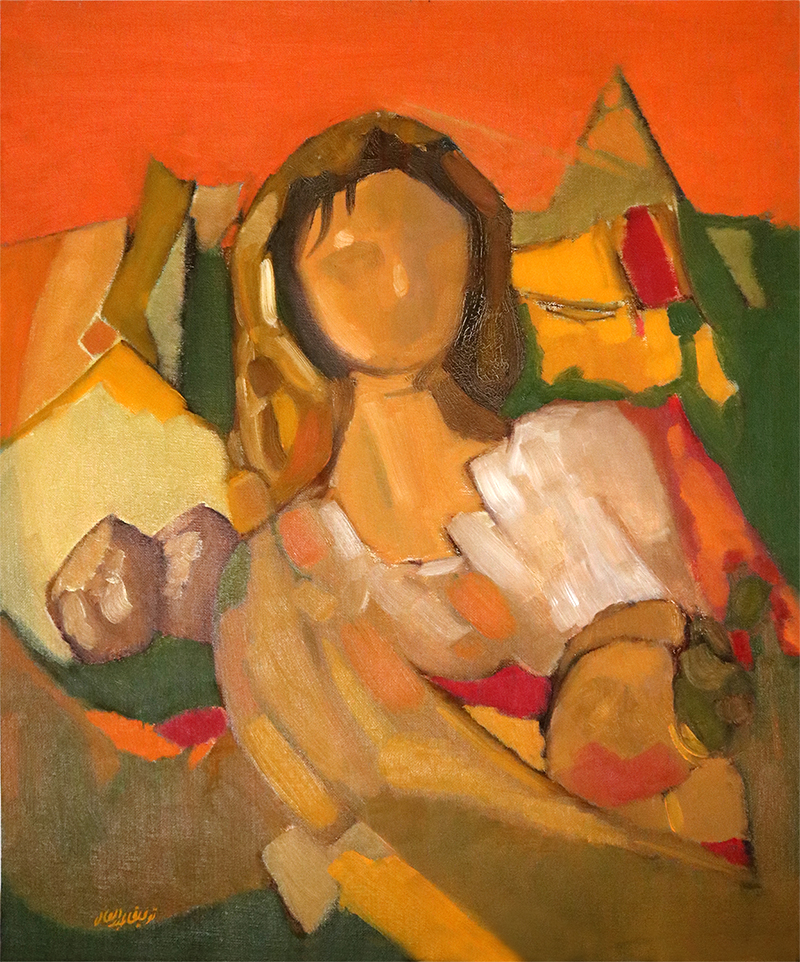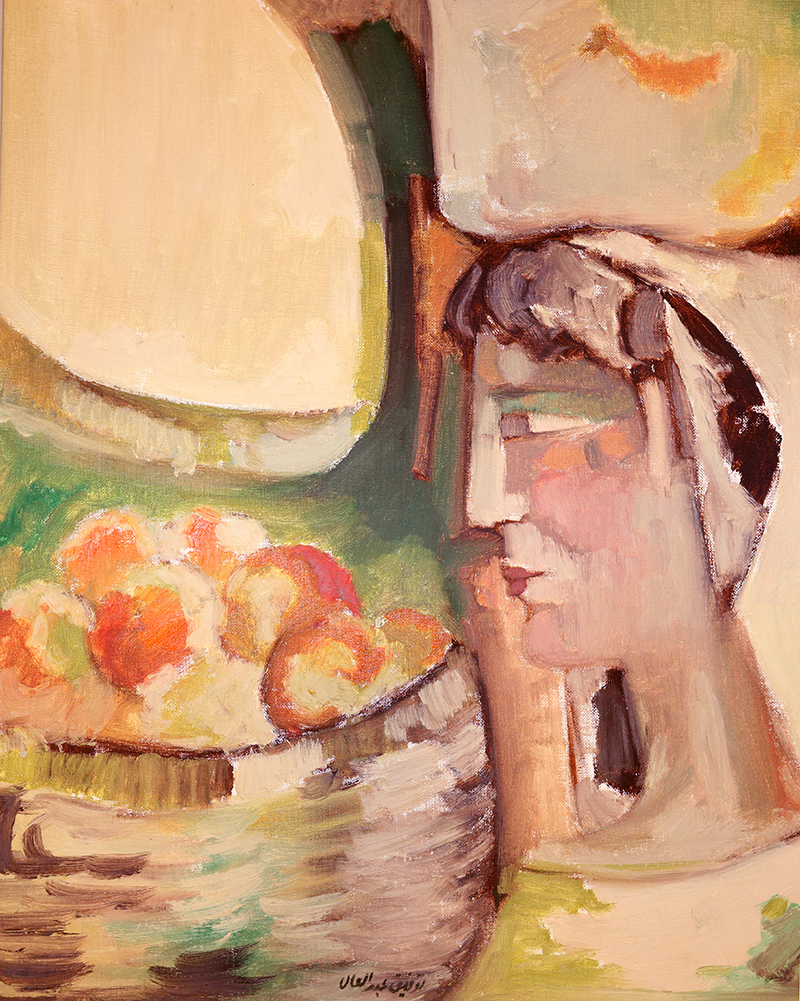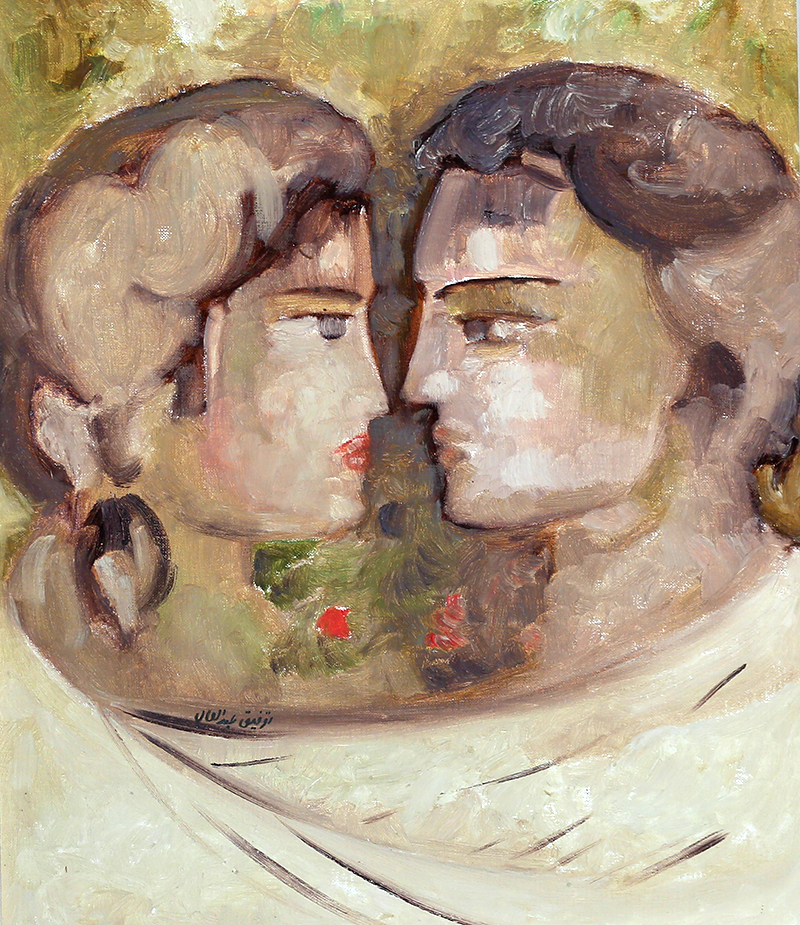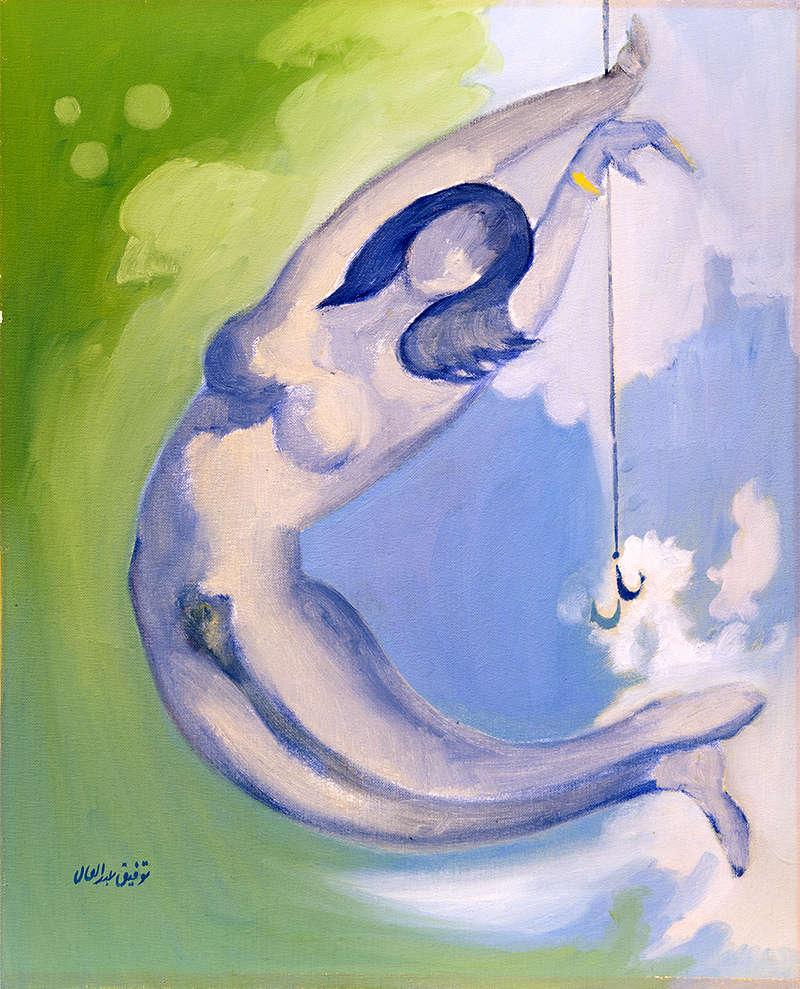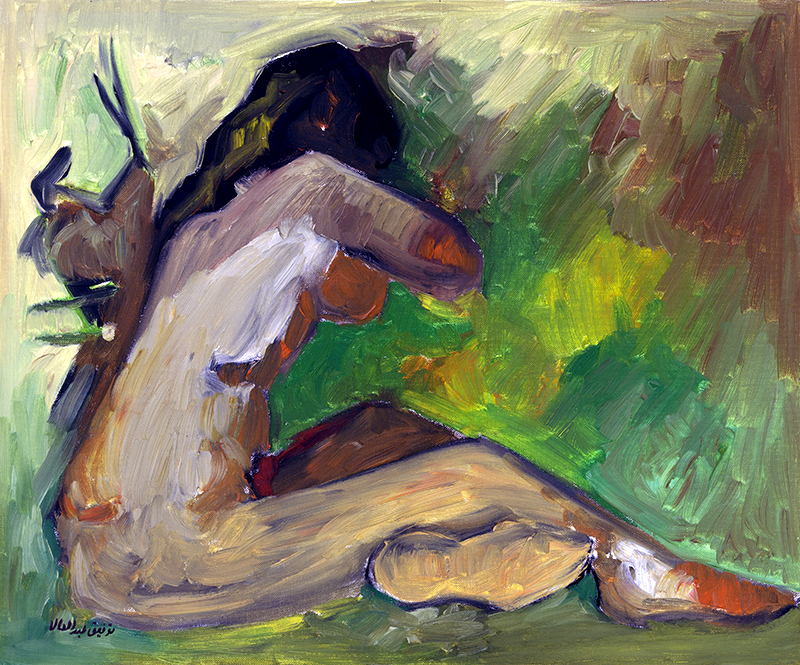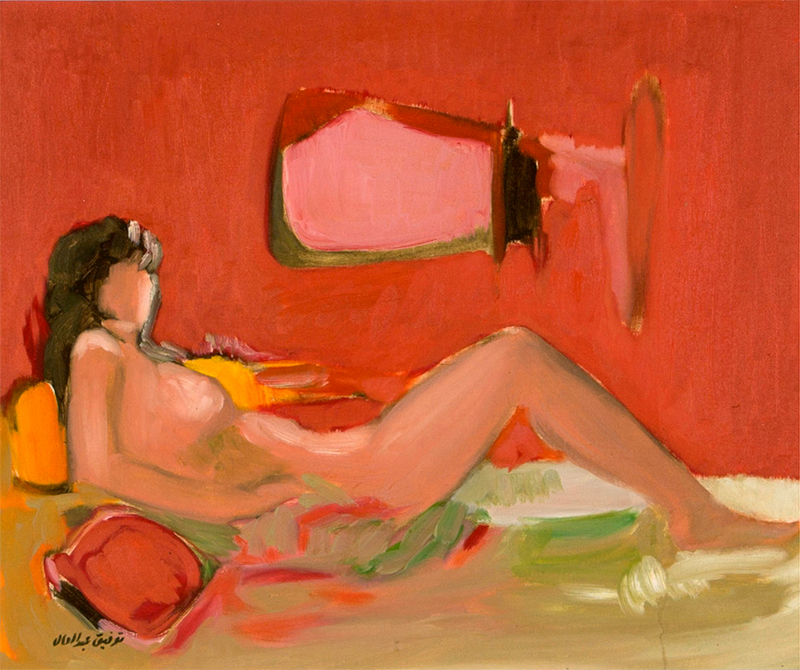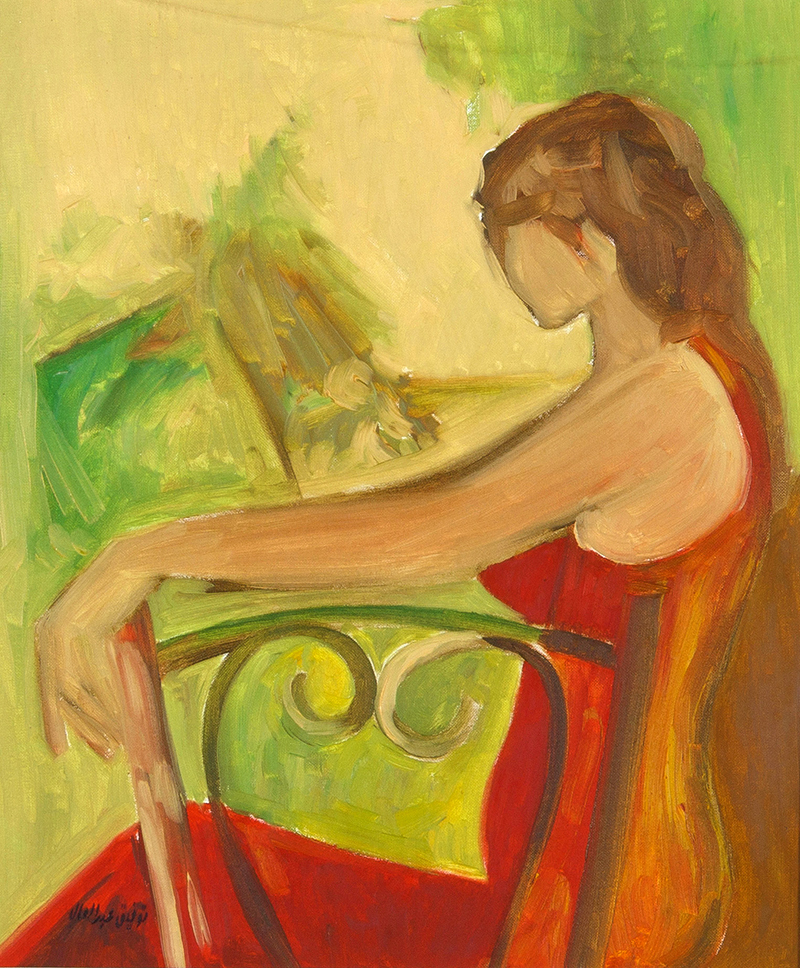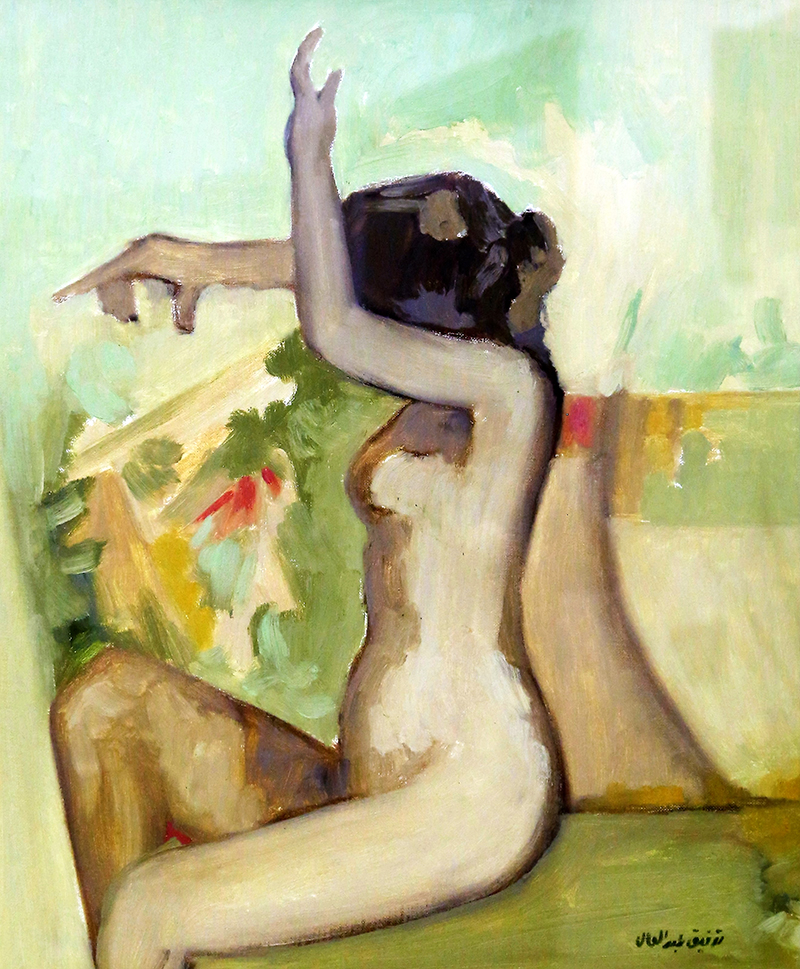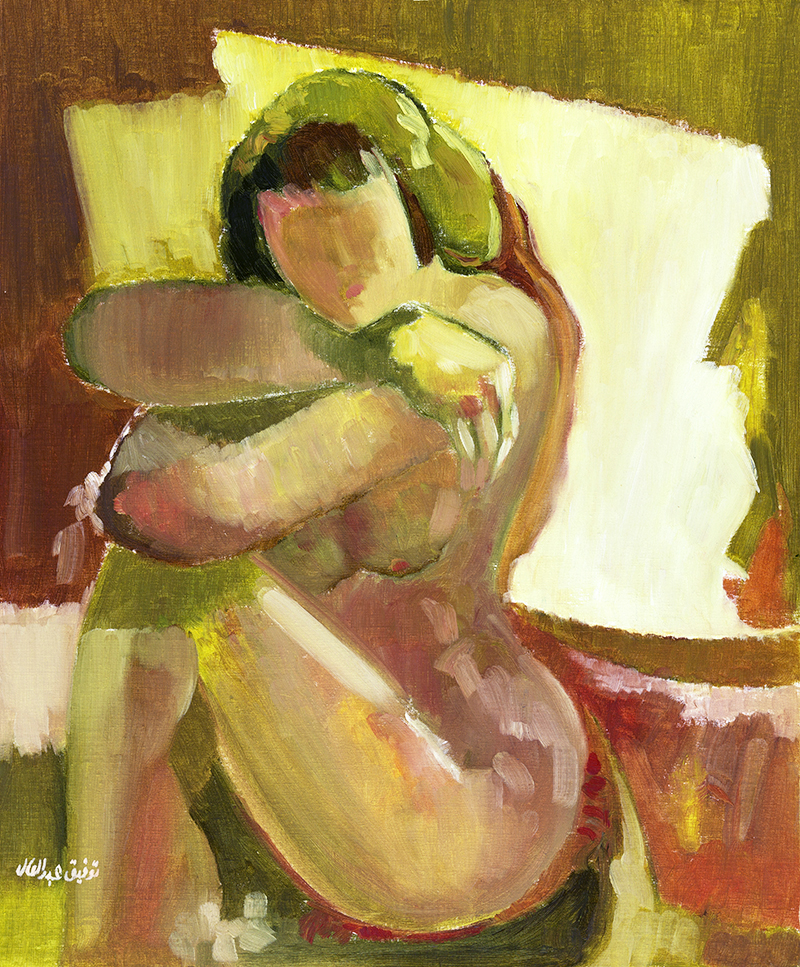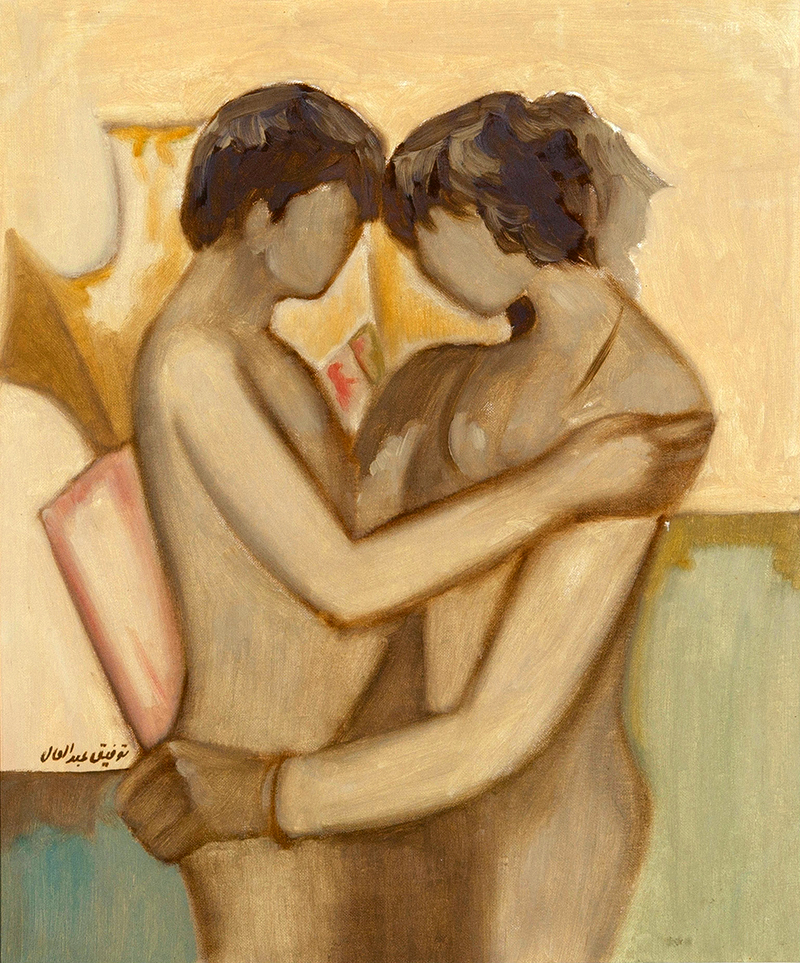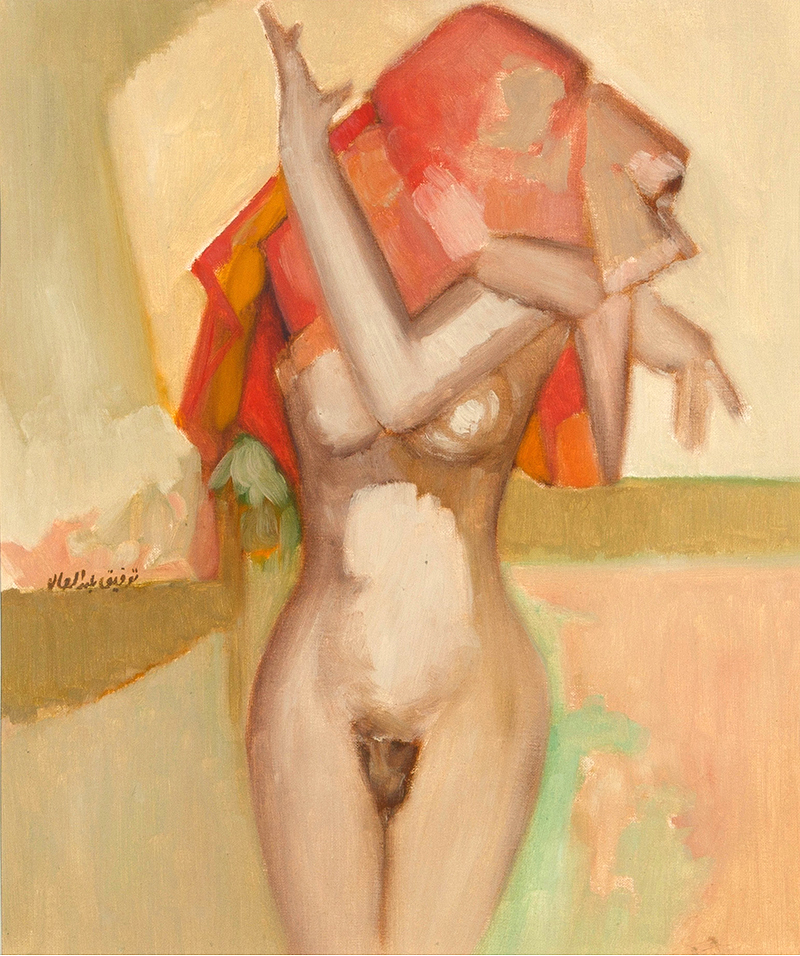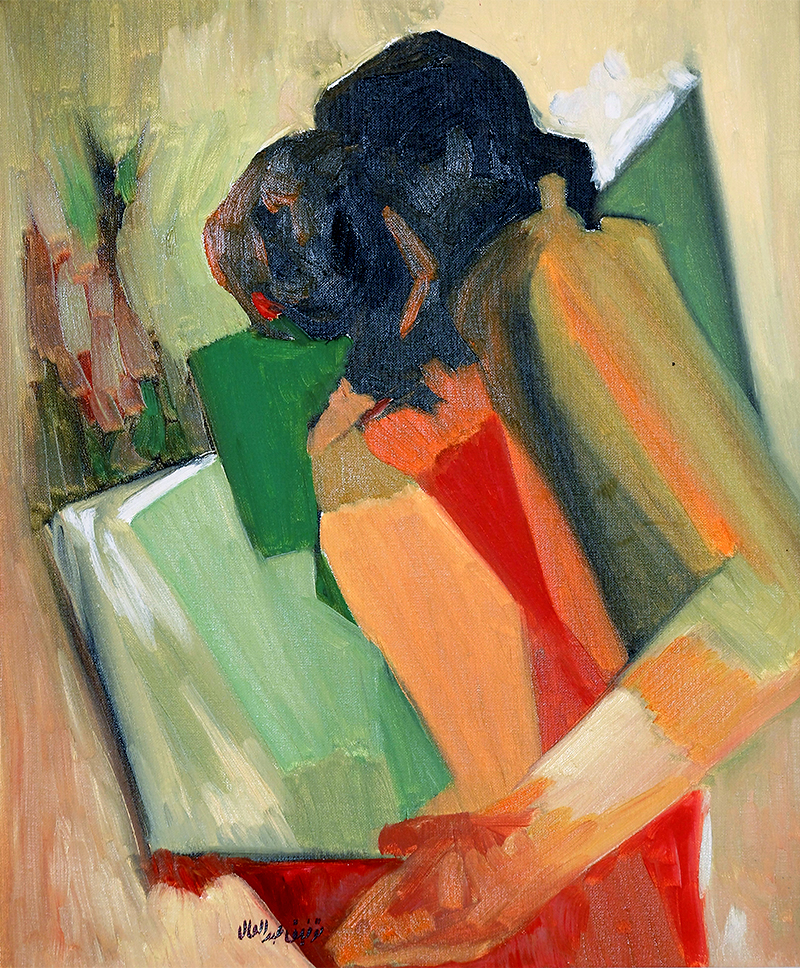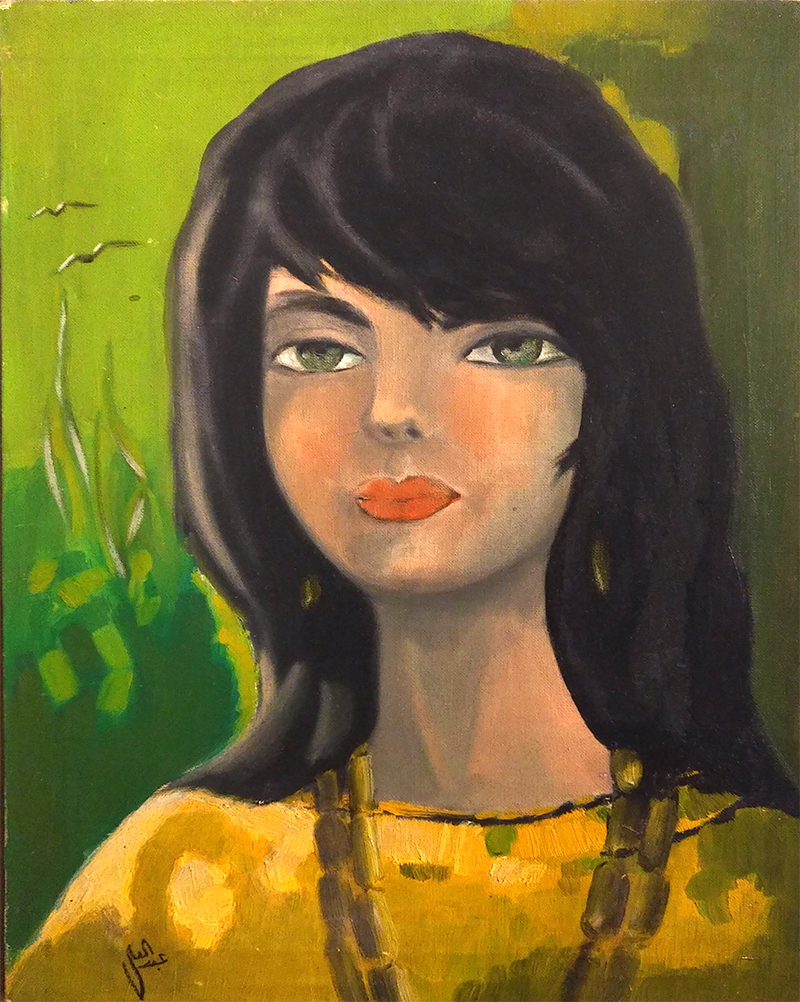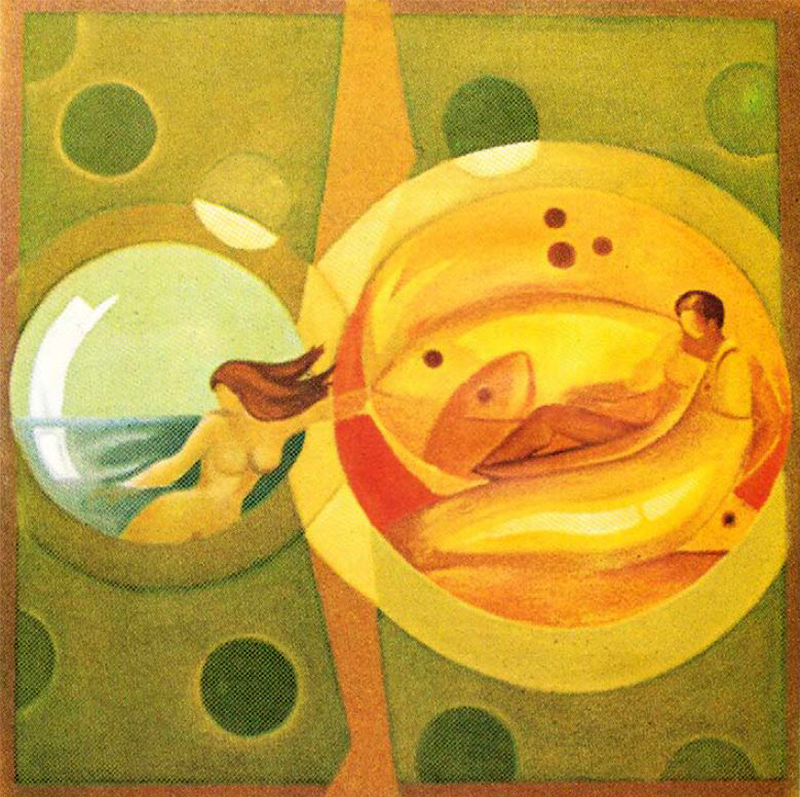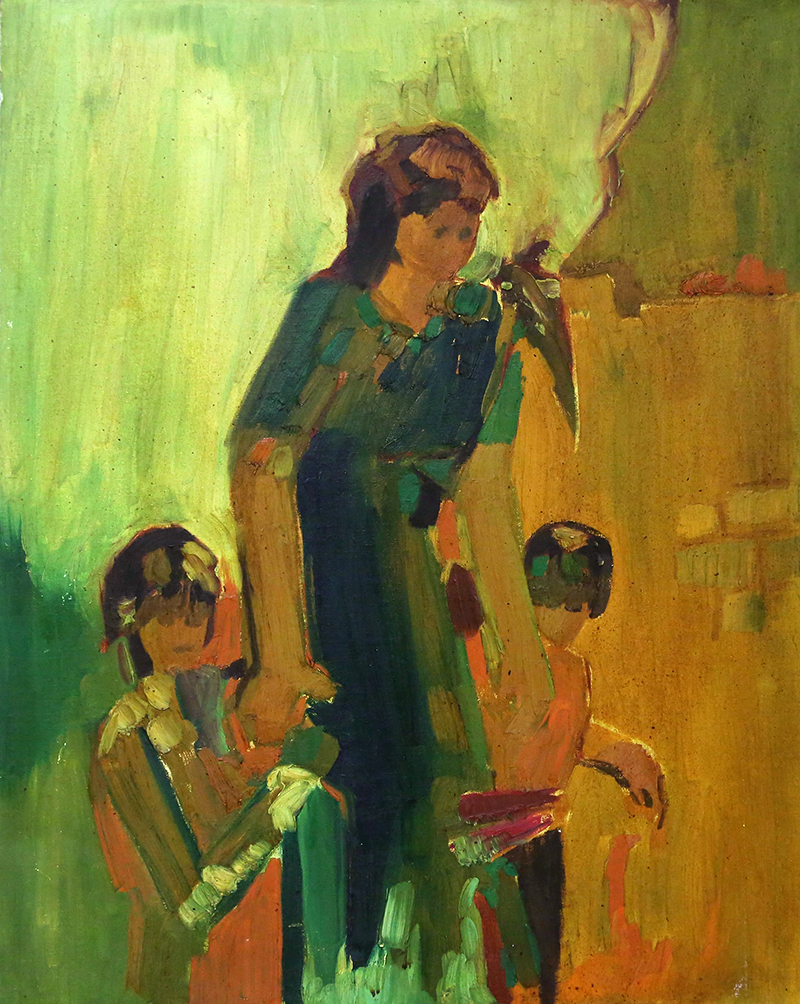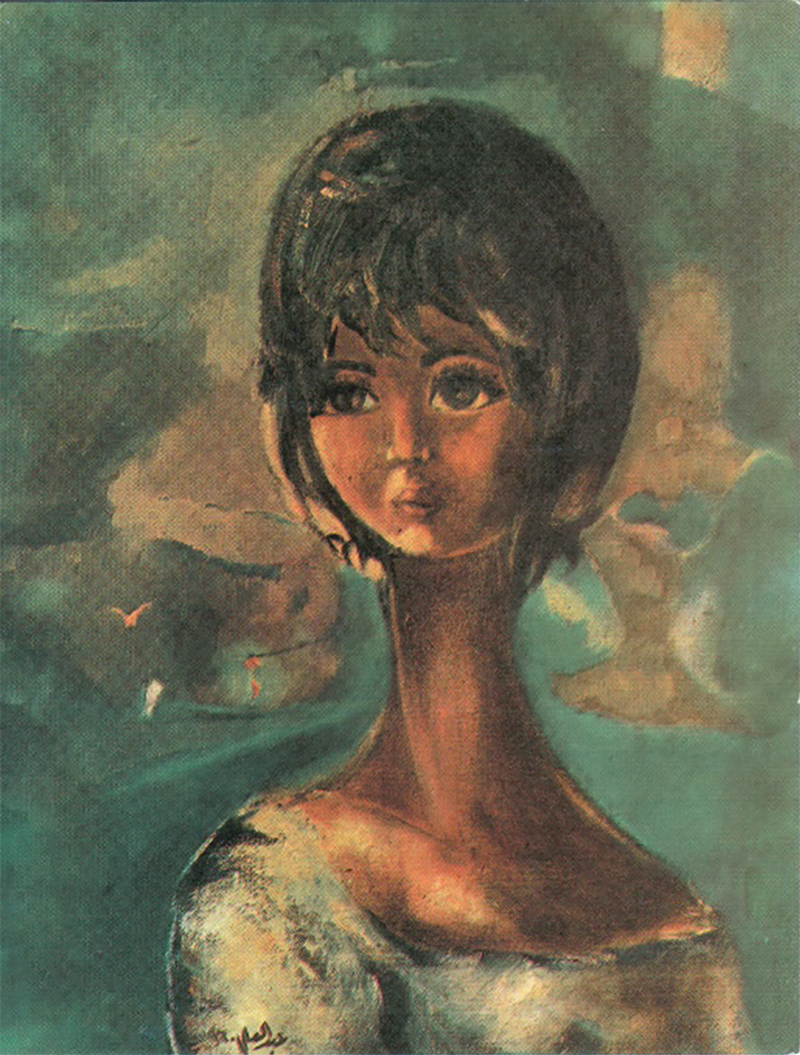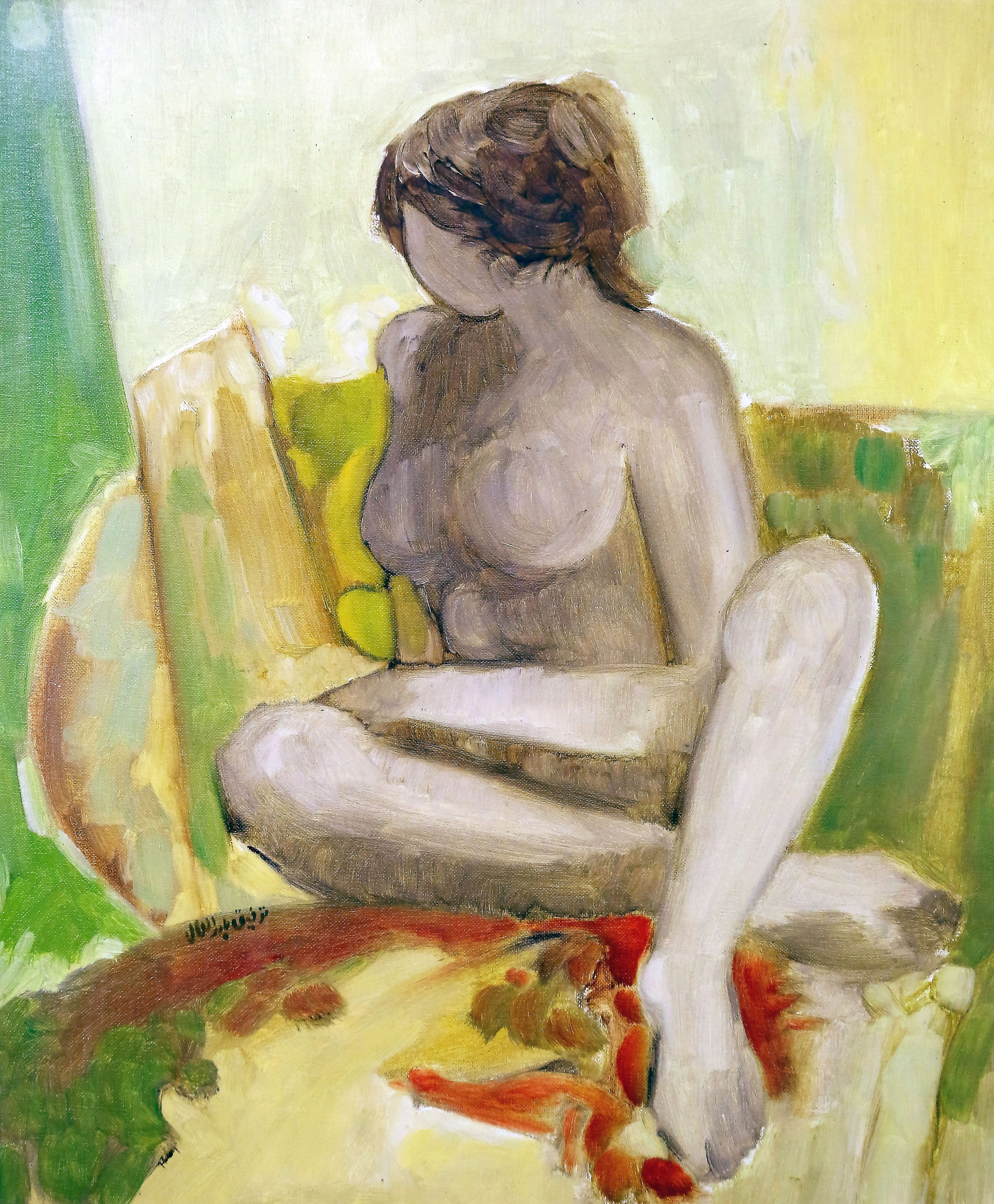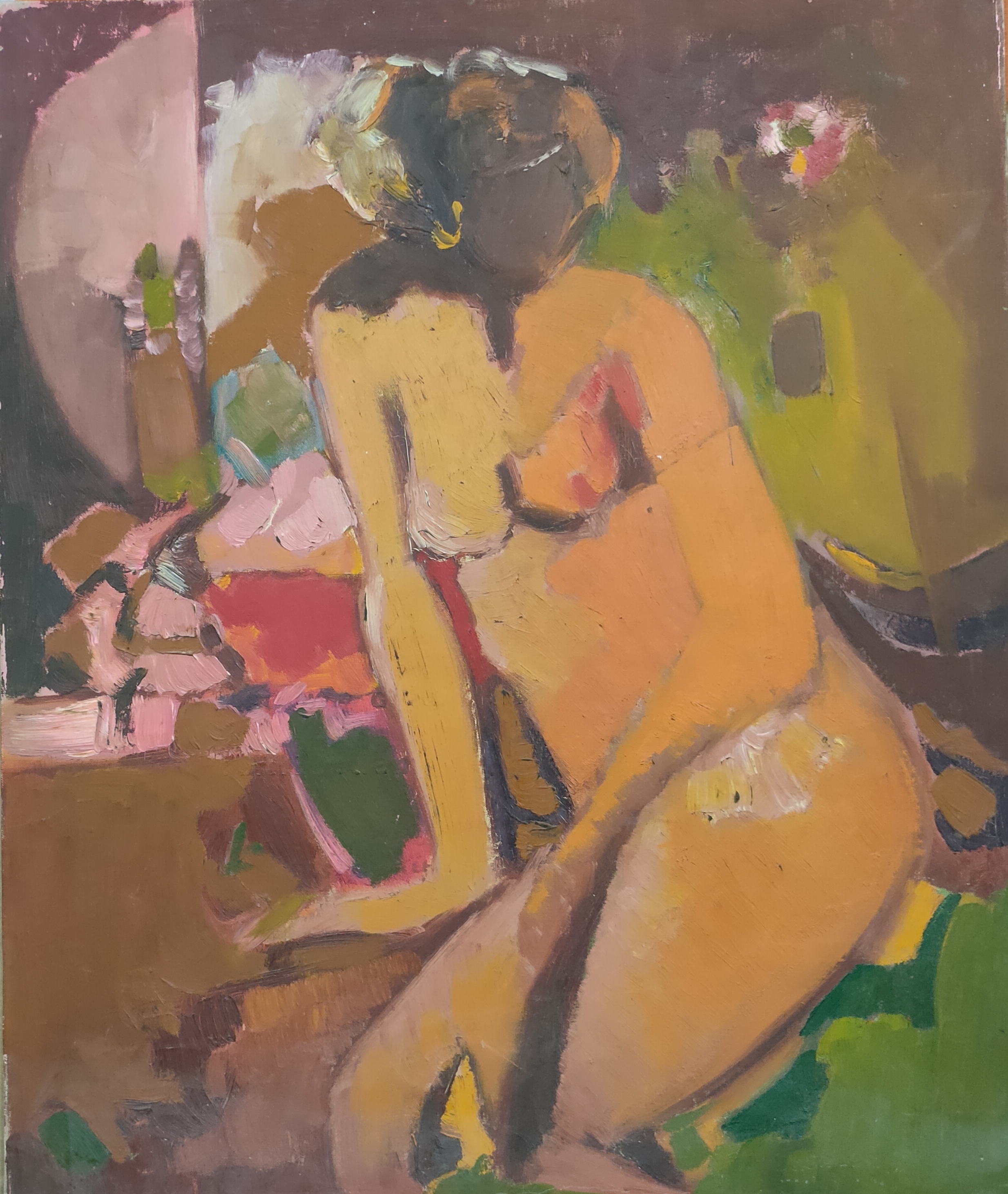The Woman | An Icon of Individuality & Beauty
The woman in the works of Toufic Abdul-Al appears in several occasions, containing many references to the self, the body, homeland, the land, revolution, love and freedom. Critic Khalil Safia believes that the presence of the woman in the works of Abdul-Al is very symbolic, could even be his main symbol, in addition to the horse and other elements inspired by spatial and cultural heritage. While the woman in a selection of his works has worn the Palestinian costume, absorbed the colours of the natural landscape in Palestine and blended with it, she also appears in many other paintings as a female with an overwhelming presence, worried by love and waiting, while her body remains a subject of beauty and contemplation.
Even in his oil paintings, which depicts the naked female body, Toufic Abdul-Al did not move away from the controversial relationship between the body, the land and the memory when it comes to representing his cognitive vision of women; in his childhood years in Acre, children were allowed to accompany women to Al-Pasha Bath. As narrated by Ali Khalaf, the eastern bath which is famous for its glass-decorated dome, copper kettles and its rounded chandelier. Dozens of paintings have derived their theme from this bath.
The body in his other works is vigorously and intensely present, with colours closer to earth’s clay, apparent lines and sharp and prominent curvatures, scenes of waiting, adoration, hugging, vulgarity, boredom and brokenness as well. The woman was a metaphor for the country and the land in the work of many pioneers before, often appearing with a headscarf or in traditional long dresses on the expense of the perception of the woman as a human being, the female and the body. On the other hand,
Toufic Abdul-Al showed an early boldness in portraying women, highlighting their femininity, humanity and their various conditions, including their strengths and weaknesses. At the same time, despite the nudity of the body, the relationship with the land is also present; the woman in these works is the lost and desired homeland.
